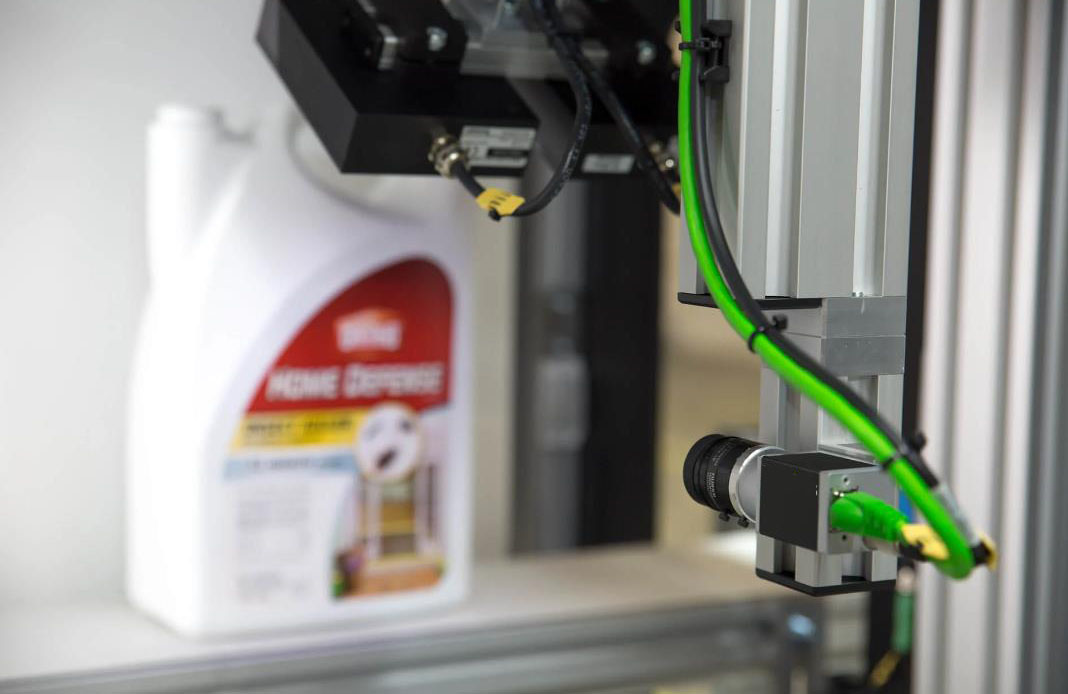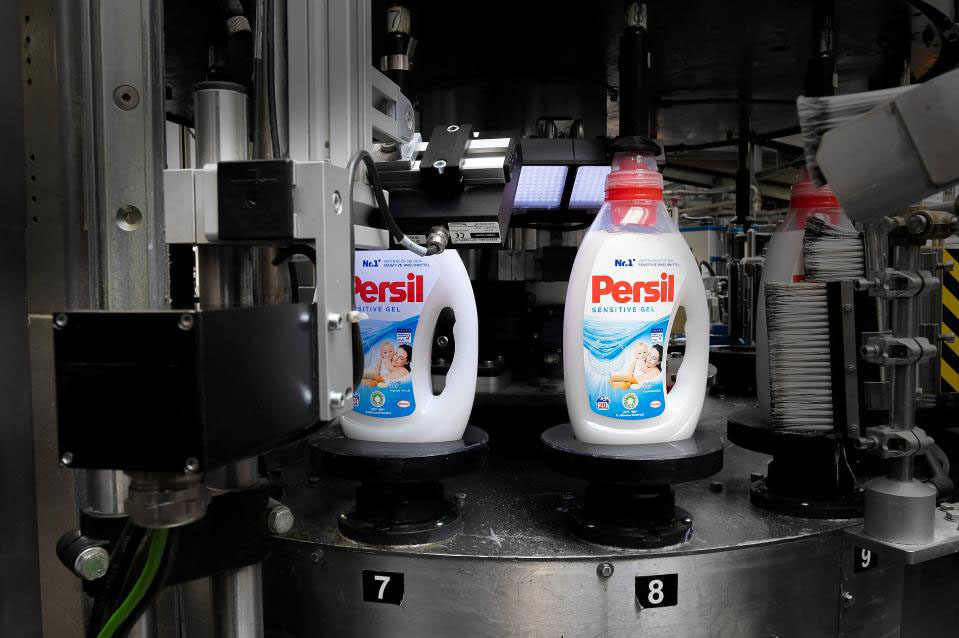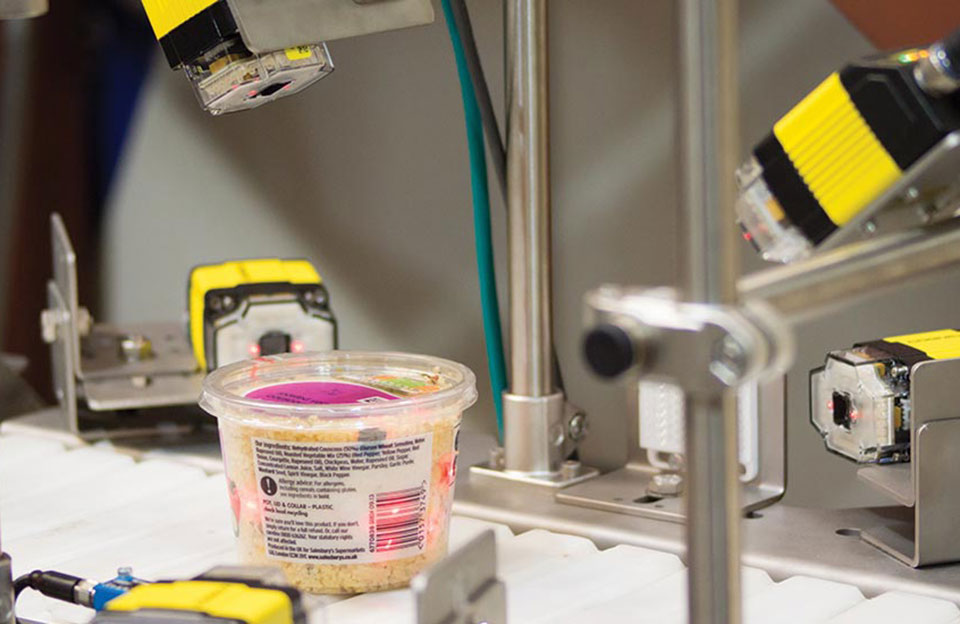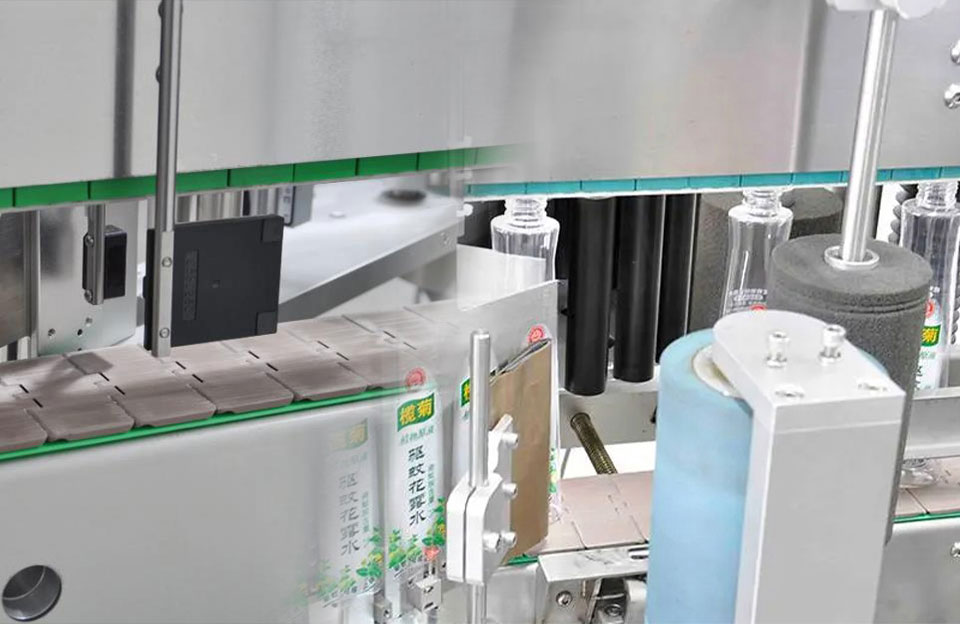The vision inspection system in labeling machines holds significant importance in various industries, particularly those involving product packaging, quality control, and regulatory compliance. This system utilizes cameras and image processing software to inspect product labels during the labeling process.
Many industries, such as pharmaceuticals, food, and beverages, have strict regulatory requirements for labeling. The visual inspection system helps verify that the correct labels with accurate information, including safety warnings and usage instructions, are applied to products, ensuring compliance with legal and safety standards.
The Function of Vision Inspection System in Labeling Machines
The vision inspection system in labeling machines serves as an automated quality control mechanism that uses cameras and image processing software to inspect product labels as they pass through the labeling process. Its primary function is to ensure the accuracy and integrity of the labeling process. Here are the key functions of a vision inspection system in a labeling machine:
- Label Verification: The system verifies that the correct labels are applied to the intended products. It checks label information, including text, graphics, barcodes, and other identifiers, to ensure they match the product’s specifications.
- Label Alignment and Positioning: The vision system checks for proper alignment and positioning of labels on the products. It ensures that labels are centered, applied straight, and consistently placed on each item.
- Detecting Missing or Damaged Labels: The system identifies if any products are missing labels or have damaged labels that may not adhere properly. This ensures that no products leave the production line without appropriate labeling.
- Barcode and QR Code Verification: The vision inspection system reads and verifies barcodes and QR codes on the labels, ensuring they are accurate and scannable, which is crucial for inventory management and tracking.
- Lot and Batch Code Verification: It confirms that the lot and batch codes printed on the labels match the correct products, ensuring traceability and compliance with regulatory requirements.
- Label Presence and Orientation: The system checks whether a label is present on each product and verifies its orientation (e.g., the label is not upside down or rotated incorrectly).
- Defect Detection: The vision inspection system identifies label defects, such as streaks, wrinkles, bubbles, or other imperfections that may affect the appearance or readability of the label.
- Reject Mechanism: If the vision system detects any labeling issues or discrepancies, it can trigger a rejection mechanism to remove faulty products from the production line, preventing defective items from reaching consumers.
- Data Logging and Reporting: The system records inspection results and generates reports, providing valuable data for process optimization, traceability, and quality assurance.
- Integration with Automation: The vision inspection system seamlessly integrates with the labeling machine’s automation, enabling real-time feedback and immediate corrective actions if any issues are detected, minimizing downtime and improving production efficiency.

Vision Inspection System In Labeling Machines
Advantages and Disadvantages of Vision Inspection System in Labeling Machines
- Advantages of Vision Inspection System in Labeling Machines:
- Improved Quality Control: The primary advantage of a vision inspection system in labeling machines is its ability to ensure consistent and accurate labeling. It minimizes human errors and identifies labeling defects that may go unnoticed during manual inspections, leading to higher product quality.
- Increased Production Efficiency: Vision inspection system in labeling machines can work at high speeds, inspecting labels on products in real time without slowing down the production process. This boosts efficiency and reduces bottlenecks in the labeling line.
- Cost Savings: By catching labeling defects early in the process, the system helps prevent producing defective products. This reduces waste and saves costs associated with rework, scrap, and potential product recalls.
- Enhanced Traceability: The system can read and verify barcodes, QR, and batch codes, providing accurate product traceability and facilitating effective inventory management.
- Flexibility and Adaptability: Vision inspection system in labeling machines can be easily reconfigured to inspect different label sizes, shapes, and product types, making them suitable for various labeling applications.
- Real-time Feedback and Alerts: Any labeling issues detected by the vision system can trigger immediate alerts or rejections, allowing operators to take quick corrective actions, reducing the chances of producing defective products.
- Data Collection and Analysis: Vision inspection systems provide valuable data and statistics on labeling performance, enabling manufacturers to analyze trends, identify patterns, and make data-driven process improvements.
- Limitations of Vision Inspection System in Labeling Machines:
- Initial Investment: Implementing a vision inspection system can involve significant upfront costs for the equipment, software, and integration with the labeling machine.
- Maintenance and Calibration: Vision systems require regular maintenance and calibration to ensure accurate and reliable performance. This can add ongoing costs and downtime for the equipment.
- Complexity: The setup and calibration of a vision inspection system can be complex, requiring skilled personnel to install, configure, and optimize the system for specific labeling tasks.
- False Positives and Negatives: Although advanced, vision systems may still produce false positives (incorrectly identifying defects) or false negatives (failing to detect defects). Continuous monitoring and fine-tuning are necessary to reduce such errors.
- Limited Label Material Compatibility: Some vision inspection system in labeling machines may struggle with certain label materials, surface finishes, or transparent labels, affecting their accuracy and reliability.
- Dependence on Lighting Conditions: Proper lighting is crucial for the effectiveness of a vision inspection system. Ambient lighting conditions may affect inspection results, requiring additional lighting adjustments.
- Integration Challenges: Integrating the vision system with existing labeling machines or production lines might pose technical challenges, especially in older or less automated systems.

Vision Inspection System
Development Prospect of the Future Vision Inspection System in Labeling Machines
The development prospects of future vision inspection system in labeling machines is promising, driven by advancements in technology and industry demands for higher accuracy, efficiency, and automation. Some key trends and potential developments include:
- Artificial Intelligence (AI) Integration: Future vision inspection systems will likely incorporate AI and machine learning algorithms. This will enable the systems to learn from data, adapt to changing conditions, and improve their performance over time. AI-powered systems can handle complex image analysis tasks, enabling more accurate defect detection and reducing false positives/negatives.
- Deep Learning and Neural Networks: Deep learning techniques, especially convolutional neural networks (CNNs), have shown significant promise in image processing and pattern recognition. These technologies are likely to be applied in future visual inspection systems to enhance their ability to identify intricate defects and label variations.
- 3D Imaging: 3D imaging technologies, such as stereo vision and time-of-flight cameras, might find applications in visual inspection systems. These technologies can provide additional depth information, which is valuable in inspecting irregularly shaped products and complex label contours.
- Hyperspectral Imaging: Hyperspectral imaging allows the capture of spectral data for each pixel in an image, enabling the detection of defects that may not be visible in standard RGB images. Integration of hyperspectral imaging can improve the accuracy and sensitivity of label inspections.
- Advanced Lighting Solutions: Lighting is critical in visual inspection systems. Future developments might focus on innovative techniques, such as multispectral or structured lighting, to improve image contrast and enhance defect detection capabilities.
- Internet of Things (IoT) Integration: IoT connectivity can enable remote monitoring, real-time data analytics, and predictive maintenance of visual inspection systems, enhancing their overall efficiency and reliability.
- Robotic Integration: Vision inspection system in labeling machines might be integrated with robotic arms to enable automated label placement and inspection, further streamlining the labeling process and reducing manual intervention.
- Industry 4.0 and Smart Manufacturing: The future visual inspection systems will likely be part of smart manufacturing setups, integrated into a network of interconnected machines, sharing data and insights and enabling data-driven decision-making for process optimization.
- Enhanced User Interfaces: Future systems may feature user-friendly interfaces, making it easier for operators to set up, calibrate, and manage inspections, as well as interpret inspection results.
- Increased Adaptability: Visual inspection systems may become more adaptable to handle a wide range of label types, sizes, and materials, reducing the need for frequent reconfiguration when changing product lines.
Conclusion
Vision inspection system in labeling machines plays a crucial role in maintaining product quality, ensuring compliance, and optimizing the production process in industries where labeling accuracy and consistency are essential.
Automating the inspection process with machine vision technology significantly speeds up the inspection process compared to manual inspection, leading to increased production efficiency and overall productivity. Consistently applying accurate and attractive labels enhances a product’s visual appeal, contributing to a positive brand image.


